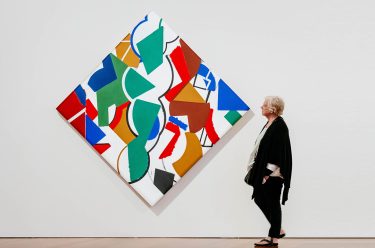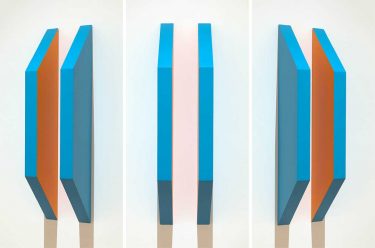A generous gift to the Collection from James C Sourris, AM, this jazz-titled, lozenge-shaped canvas by Australian artist Dick Watkins ‘oozes 1960s cool and vitality’.
In the 1968 catalogue for the landmark exhibition ‘The Field’, Royston Harpur identified The Mooche 1968 (illustrated) by Dick Watkins as ‘the outstanding painting’ in the exhibition.1 Curator Brian Finemore and exhibition officer John Stringer brought together the latest in Colour Field and hard-edge abstract painting and sculpture for ‘The Field’, which was held at the newly built National Gallery of Victoria on St Kilda Road in Melbourne. The exhibition attracted huge publicity and attendances, with around 100 000 visitors in its first weekend.2 Critics at the time were particularly harsh, but today ‘The Field’ is acclaimed as one of the most important exhibitions in Australian art history. Testaments to this are the generous amount of literature on it and numerous exhibitions revisiting the theme since the 1980s. Early in his career, Watkins looked to the work of North American abstract expressionists and Pop artists working in a narrative manner, and in 1968 attended lectures given by visiting influential art critic Clement Greenberg. Watkins’s travels between 1959 and 1961 played a key role in shaping his practice: he lived in London, visited continental Europe and stopped off in New York before returning to Australia. The Mooche hints at lyrical abstraction, at what was to come. Indeed, in his catalogue essay for ‘The Field’, Patrick McCaughey (then art critic for The Age) predicted that with The Mooche, ‘. . . the opening of the field and the loosening of the paint promise a view of the future. . .’3
Dick Watkins ‘The Mooche’
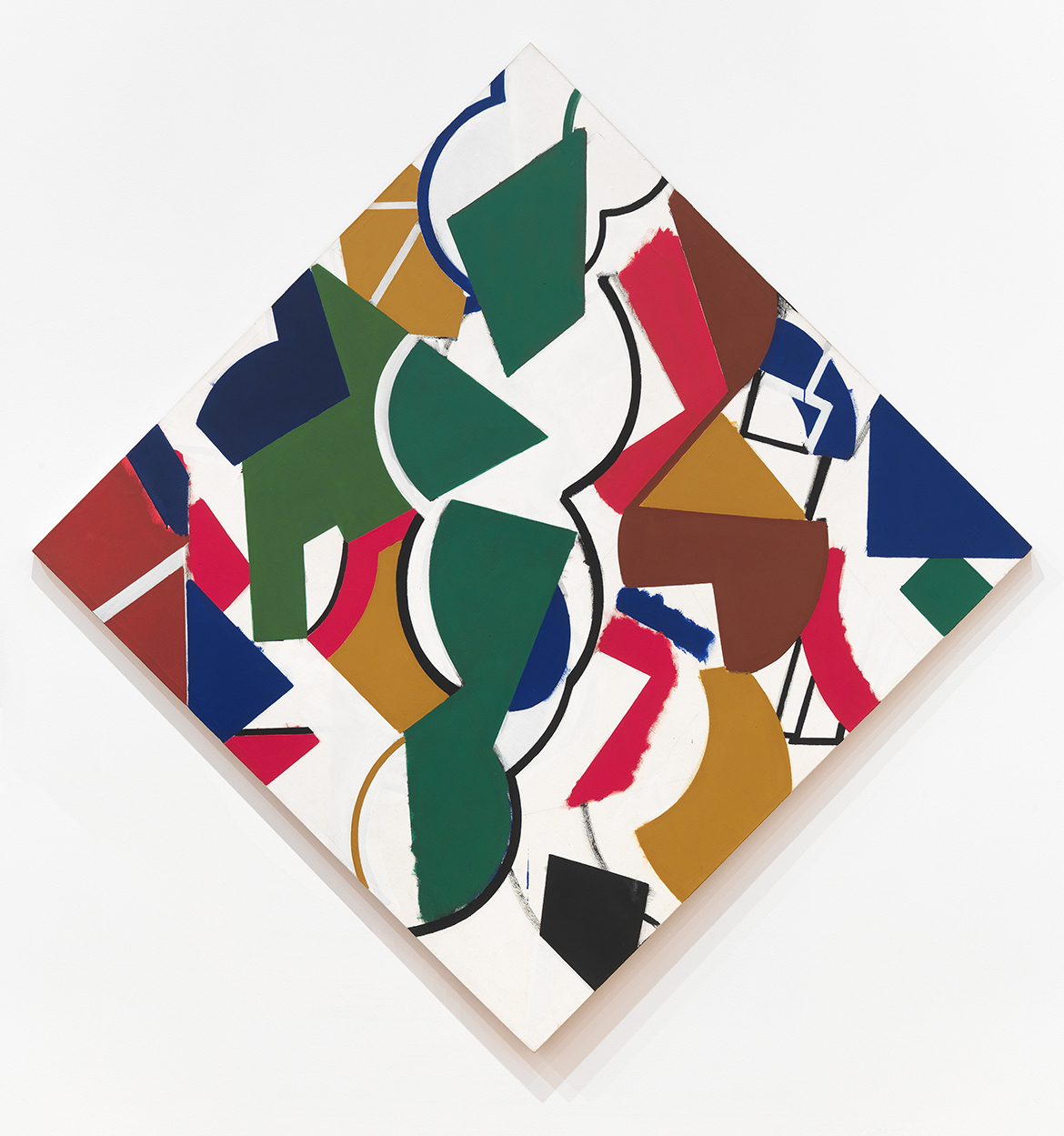
With undercurrents of Cubism and early Russian Constructivism, The Mooche is a vibrant mix of Pop meets Colour Field and hard-edge abstraction. With soft-edged forms and a rhythmic movement of shapes traversing the picture plane, this jazz-titled work oozes 1960s cool and vitality. Its lozenge-shaped canvas4 adds to the work’s dynamism and alludes to Piet Mondrian’s losangiques, first painted in 1918.
The Mooche has passed through some significant collections. Until 1988 it was owned by mining engineer Jeremy Caddy before entering the prestigious Laverty Collection (Dr Colin and Elizabeth Laverty) of Indigenous and non-Indigenous art. Gifted to QAGOMA by Brisbane collector and QAGOMA Foundation Committee member James C Sourris, AM, it strengthens our existing holdings of mid-twentieth-century paintings and early Australian abstraction. The Mooche joins three other works in the Collection that were exhibited in ‘The Field’: the large, modular Colour Field painting Arbitrator 1968 (illustrated) by Central Street frontman Tony McGillick, Dale Hickey’s Untitled 1967, and Nigel Lendon’s Slab construction 11 1968 (illustrated). Along with these are examples in the Collection that closely relate to other works in ‘The Field’, such as the influential American James Doolin’s Artificial landscape 1967, Robert Rooney’s Kind-hearted kitchen-garden I 1967, and two untitled white/off-white paintings by Robert Hunter, both from 1968.
Nigel Lendon ‘Slab construction 11’
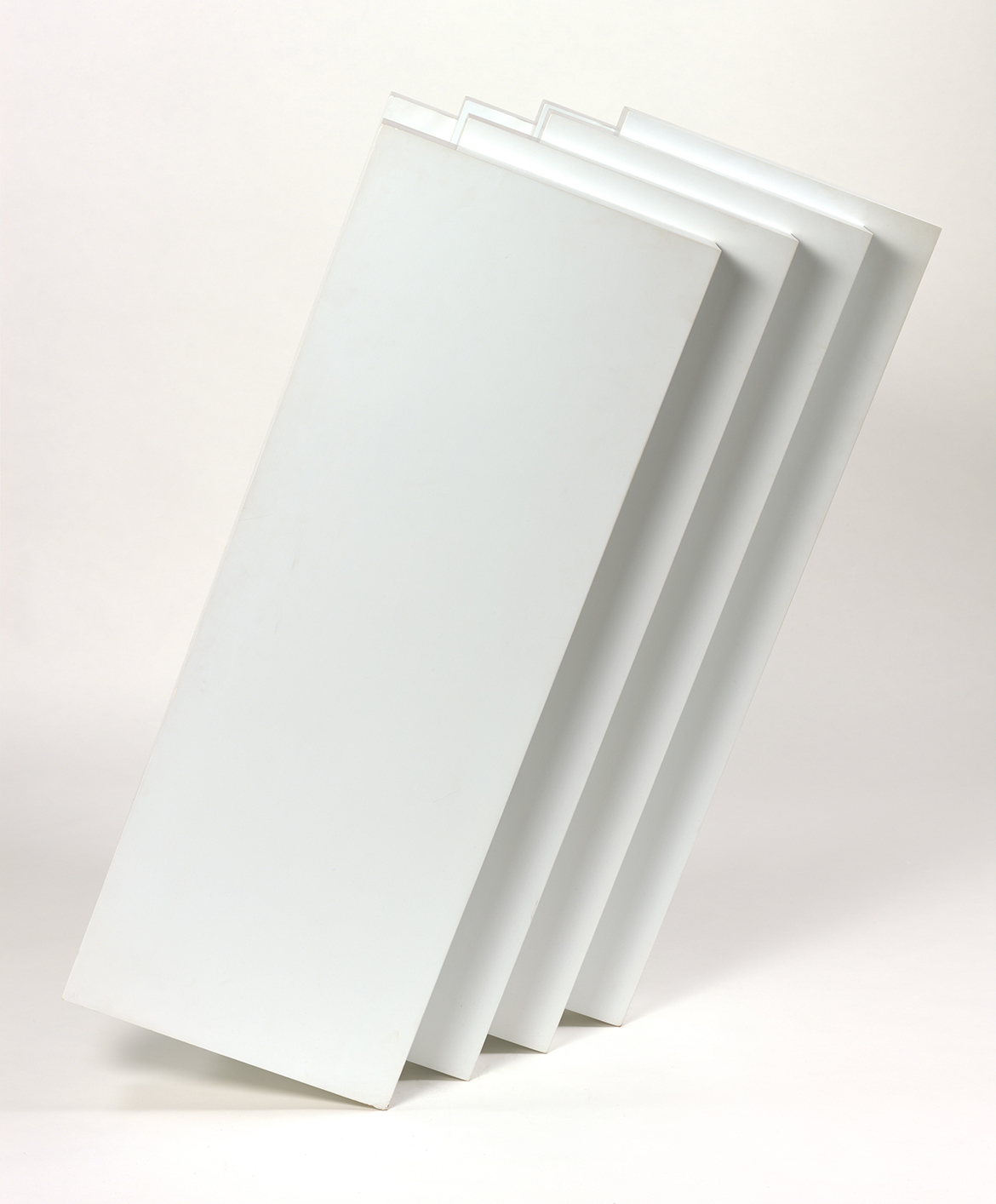
Many of the artists in ‘The Field’, including Watkins, lived or travelled overseas in the years preceding the exhibition, and this undoubtedly helped to shape its content. A time of huge political and cultural change, North American popular culture was rapidly filtering into Australian life. The Mooche emphatically represents a period when many Australian artists abandoned traditional motifs, such as the landscape, and embraced a new internationalism.
Emily Gray is Assistant Registrar GOMA, QAGOMA
Endnotes
1 Royston Harpur, then curator at the National Gallery of Victoria, artist and former manager of Sydney’s Central Street Gallery, in The Field [exhibition catalogue], National Gallery of Victoria, Melbourne, and The Aldine Press, 1968, p.93.
2 The Sun, Victoria, 26 August 1968.
3 Patrick McCaughey in The Field, p.90.
4 This was also a format used by Kenneth Noland for his paintings Go 1964 and Stand 1966, which were exhibited at the National Gallery of Victoria in Melbourne and the Art Gallery of New South wales, Sydney, as part of the hugely popular and influential 1967 exhibition ‘Two Decades of American Painting’ from the Museum of Modern Art, New York.
Tony McGillick ‘Arbitrator’
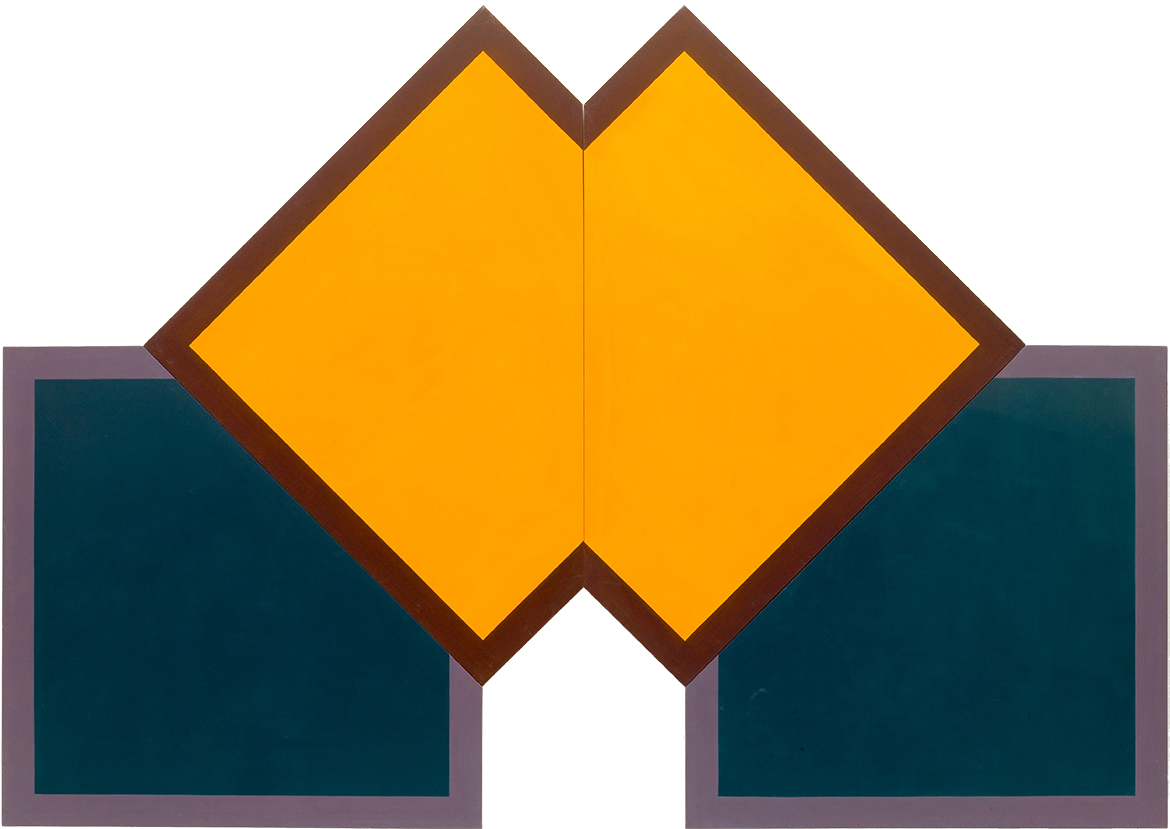
#QAGOMA
